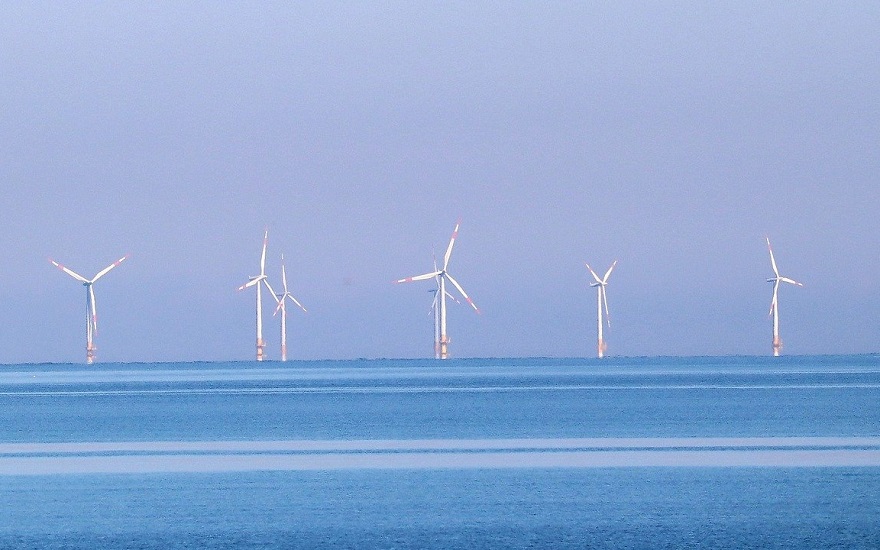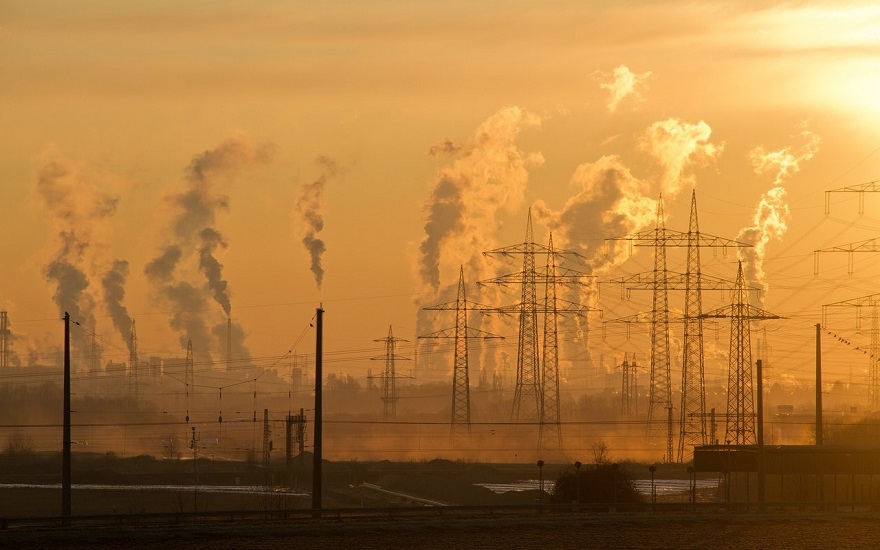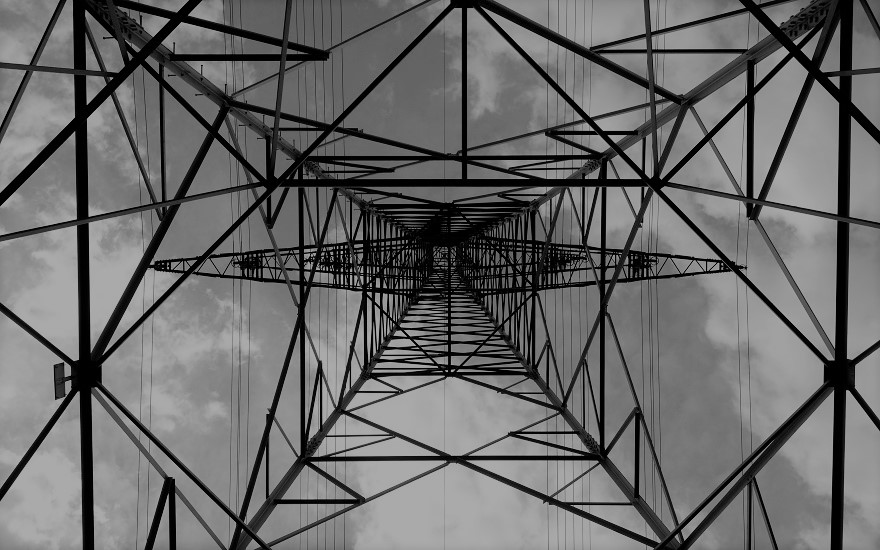Counting down some biggest blackouts the world has ever seen including electrical interruptions that left hundreds of millions of people in the dark.
In developed societies such as the UK, power cuts are rare. And when they do happen, more often than not, they’re relatively localised incidents.
Some might even be caused by something as innocuous as an animal chewing through a cable.
Sure they’re inconvenient for the hundreds or perhaps thousands of people affected. But they’re over fairly quickly with limited damage.
That’s not always the case though. Sometimes power cuts can have a much wider impact. the Blackout report explores what could cause these more serious failures.
These following examples are proof that a nationwide grid shutdown shouldn’t be seen as an “impossible” event.
Here are the biggest blackouts in history according to the sheer number of people left in the dark.
1. India Blackout 30-31 July 2012 (affected 620 million people)
The end of July saw India struck down by what were the biggest and second-largest power cuts ever.
Topped by only the United States and China, India is the world’s third-biggest producer and consumer of electricity.
However, its electrical infrastructure is notoriously unreliable and large-scale power outages are regular events. Its northern electrical grid collapsed completely in 2001.
Estimates suggest the country lost more than a quarter of the energy it generates (27%). While during the highest periods of demand, power generation often fell short by around 10%.
Extreme heat during the summer of 2012 saw power use reach record levels in the capital New Dehli. The monsoon season also arrived later than usual, meaning hydropower plants were under capacity.
While the lack of rain led to greater power consumption to run pumps to irrigate paddy fields in the agricultural areas of Punjab and Haryana.
Whether these conditions were a direct cause or not wasn’t truly established. But they provided the backdrop for a pair of power events that brought misery to millions.
The first of the failures occurred on 30 July, when circuit breakers tripped on the Bina-Gwalior line. As this line fed into the transmission section of the network, it had a knock-on effect throughout the grid.
As a result, all power stations in the affected areas closed down, causing a 32 GW shortage that left around 400 million people without power.
For a few brief hours, this was the largest ever blackout ranked by the number of people affected. But it was dwarfed by the following day’s failure.
To this day, 31 July 2012 is the world’s biggest-ever power failure. It was caused by a relay problem near the Taj Mahal, which forced several power plants to disconnect from the grid.
Approximately 38% of India’s power generation capacity went offline. The resulting blackout affected 22 out of 28 states in the north and east of the country.
The outage hit 620 million people, more than half of India’s inhabitants. For context, this figure represented roughly 9% of the entire world’s population at the time!
Despite their massive reach, both incidents were resolved relatively quickly with electricity restored to most areas by 1 August.
Investigations following the failures recommended a $400 billion strategy to revamp and update the grid to prevent such incidents happening again.
2. India Blackout 2 January 2001 (affected 230 million people)
We’re heading back to India for our next big blackout, which at the time was the largest ever on record.
On this occasion, a failure at the Uttar Pradesh substation kickstarted a collapse of the whole grid across the north of the country.
It affected six states and the capital New Dehli, while nearly a quarter of the country’s populace (230 million) were left in the dark for up to 12 hours.
Such widespread loss of power caused understandable chaos. Around 80 electric trains were stranded on tracks for 15 hours, blocking the lines until diesel-powered trains came to the rescue and move them out of the way.
Hospitals without backup generators had to postpone major surgery and scheduled operations. Roads ground to a halt as traffic lights stopped working.
While residents didn’t just have the inconvenience of no power. Electric-powered pumps stopped working, restricting access to clean water.
3. Bangladesh Blackout 1 November 2014 (affected 150 million people)
Our countdown’s first non-India entry comes from neighbouring Bangladesh. This incident that left the entire population without electricity for up to 10 hours.
A late-morning fault took out a substation in Bheramara, disrupting a 400 kV transmission line transporting 445 MW of power into the Kushtia district from India.
When the incident struck it led to such a loss of power that every plant in the country had to shut down and restart again. Late in the afternoon, the plants that had been brought back online tripped again.
Power started to be restored in some parts of the country by 9pm, with full capacity back by midnight.
The majority of Bangladeshi businesses closed during the outage, although critical sites such as hospitals and airports maintained power thanks to their backup generators.
4. Pakistan Blackout 25 January 2015 (affected 140 million people)
Political instability was the root cause of this incident. Pakistan’s biggest ever power cut left 80% of the country without electricity.
Pro-independence separatists in the Balochistan province in the southwest blew up two transmission towers in the Notal area of Naseerabad.
The attack tripped out most of Pakistan’s power plants, cutting generating capacity to 600 MW at a time where 9,000 MW was the usual national demand.
Power was restored to the capital Islamabad and major cities like Karachi by Sunday nightfall. But it took until the following Monday for supplies to be fully restored.
At the time of the incident, Pakistan had been undergoing a severe fuel shortage dating back for several years. This contributed to wider problems with the electricity network.
Pakistan’s power grid is bogged down by chronic infrastructure problems. It is also in a vicious circle of debt. The government and military often refuse to pay electricity bills. While the government also sets unrealistically low prices for consumers.
This means the state suppliers lose money and can’t afford to pay the private power generating plants. In turn, they are unable to pay their oil and gas providers, leading to their supplies being cut off.
5. Java & Bali Blackout 18 August 2005 (affected 100 million people)
Most parts of these two Indonesian islands were hit following a failure in a transmission line between Cilegon and Saguling in West Java.
The mid-morning infrastructure incident kickstarted a chain of events including the shutdown of two sections of the Paiton Power Station in East Java, along with six units of the Suralaya plant in the west of the island.
State-run electricity operator PLN confirmed the grid failed at several points across Java and neighbouring Bali.
It led to a power shortfall of 2,700 MW. This was roughly half the amount of electricity needed to power the two countries.
The sudden lack of power produced blackouts across much of both islands, including Indonesian capital city Jakarta. This caused chaos for commuters reliant on electric-powered trains.
While the use of candles started at least six fires across the capital alone. Power was restored to most affected locations by late afternoon.
6. Southern Brazil Blackout 11 March 1999 (affected 97 million people)
For a time, this was the world’s largest-ever power failure. A lightning strike tripped the 440 kV circuits at a substation in São Paulo state.
Brazil’s power grid was suffering from a prolonged lack of investment, and with few routes available for power to flow from plants through the 440 kV network, several generators automatically shut down.
The Itaipu power station, which was then the biggest electricity generator in the world, attempted to support the load.
But the 750 kV AC and 600 kV DC transmission lines connecting the plant to the grid weren’t able to sustain the load and the plant tripped out too.
Consumers to the south of São Paulo were hit by an over-frequency caused because Itaipu was only connected to this part of the network.
All other generators in the area reduced their loads to try and mitigate this issue. The rest of the grid experienced under-frequency through a lack of generation capacity
The blackout left the southern third of Brazil without power. This included São Paulo, Rio de Janeiro, Minas Gerais, Goiás, Mato Grosso, Mato Grosso do Sul and Rio Grande do Sul.
Most of the Minas Gerais system remained online powering Brazil’s capital, Brasília, as well as the state of Goiás and some of Espirito Santo.
Restoration of electricity supplies began after four hours.
In the aftermath of the outage, an expert investigation stated that Brazil’s energy infrastructure was extremely vulnerable.
It was overly reliant on water to run the hydroelectric plants, there weren’t alternative transmission routes, and if there was a failure at one plant, there wasn’t a safety net to prevent the event spreading.
7. Turkey Blackout 14 April 2015 (affected 70 million people)
There was little delight for the Turkish population after this incident. Two power plants (Izmir in the Aegean province and Adana Cukurova in the Mediterranean province) failed on the same day.
This cut the grid’s capacity by up to 10%, which like in so many similar situations, resulted in the complete shutdown of the rest of the system. In this case, the outage lasted for about 10 hours.
Turkey was basically divided in half during the outage. The western part suffered from a lack of generation, which meant the frequency dropped.
Load shedding did stabilise things to a point. But then some of the plants couldn’t handle running at a reduced frequency and stopped working.
Over in the east, the hydropower supply that wasn’t able to flow westward caused an over-frequency that tripped out other power plants.
The grid also separated from the Central European synchronous zone when interconnectors to Greece and Bulgaria disconnected. At least this limited the blackout’s effects to Turkey and didn’t impact on neighbouring countries.
The western and eastern parts of the system were re-synchronised roughly seven hours after the incident began, with 95% of supplies restored within a further couple of hours.
At the time, there were rumours that the incident was the result of a cyber-attack.
It came at a period where Turkey was on the brink of an agreement to link up with the wider European power network. This deal could have collapsed if Turkey’s power lines weren’t safe.
Government officials did investigate the possibility of hackers at work. They found no evidence of such foul-play.
Indeed the actual cause of the fault was slightly less malign. The blackout occurred at the exact time maintenance work was being carried out on more than one transmission line at the same time.
Because of this, the system had lost its secure N+1 redundancy, which played a part in the remaining transmission lines overloading once the main Osmanca-Kursunlu line tripped out.
8. Brazil and Paraguay Blackout 10 November 2006 (affected 60 million people)
Strong winds and heavy rain was the instigator for this outage. It resulted in the first shutdown of the Itaipu Dam – which Brazil shares with Paraguay – in its 25-year history.
The bad weather led to three transformers on a crucial high-voltage transmission line short-circuiting. As a result, there was an immediate loss of 14 GW of power.
The interconnectors linking Itaipu to Paraguay’s other main power plant at Yacyretá on the Argentinian border also failed, plunging the whole country into darkness.
In Brazil, nearly three-quarters of states (18 out of 26) lost power. Major cities hit included São Paulo, Rio de Janeiro, Belo Horizonte, Campo Grande, and Vitória.
Altogether, the loss of power totalled 28 GW or just under half (45%) of Brazil’s total energy consumption at that moment.
As with our previous example in Turkey, several media outlets including the long-standing American show 60 Minutes speculated that the outage was the work of cybercriminals.
However, a US diplomatic cable released by the WikiLeaks project refuted these claims.
9. Italy Blackout 28 September 2003 (affected 56 million people)
This was the largest in a series of large-scale blackouts in 2003. It affected all of Italy (apart from the islands of Sardinia and Elba) for up to 12 hours, as well as parts of Switzerland.
Power failed at 3:20 am local time. Initial reports from transmission network operator GRTN revealed that a storm damaged the overhead power lines at the Lukmanier pass which supplies electricity from Switzerland to Italy.
This resulted in a sudden increase in demand from two 400 kV lines transporting power between France and Italy, which also tripped out.
These events created a cascading effect as GRTN lost control of the grid within seconds. Power lines to neighbouring countries tripped one after the other.
Without the crucial imported power, frequency immediately dropped to 49 Hz. Within another two and a half minutes, frequency fell again under the safe threshold of 47.5 Hz. This automatically initiated protection mechanisms such as load shedding.
However, the under-voltage load shedding didn’t compensate for the additional loss of generation when around 7.5 GW of distributed power plants also disconnected.
Nearly all major cities had their power restored by the following morning. However, scheduled power cuts for 5% of the population were in place for the following two days until supplies returned to full capacity.
The 2003 Italian power outage has come to be seen as a failure of interdependent electricity networks.
Namely how the failure of several power station node failures led to an internet glitch, which in turn led to more power stations shutting down.
The event has become a focus for scientific researchers to try and understand how to build more robust systems and overcome the vulnerability of modern power grids.
10. Northeastern USA & Canada USA Blackout 14 August 2003 (affected 55 million people)
This was the world’s second-biggest blackout at the time, only topped by the 1999 system failure in southern Brazil.
For context, it was far more widespread than the ‘Great Northeastern Blackout’ of 1965, which also hit eastern America and Canada.
Most had power restored within a few hours or at worst a couple of days. But some people living in remote areas were without electricity for nearly a week.
The blackout happened on a hot day, which increased energy demand as homes and businesses cranked up the air conditioning. As higher currents than usual heated the power lines, they started to sag.
A power plant in Eastlake, Ohio went down. This put heightened pressure on high voltage power lines in Walton Hills, a suburb of Cleveland.
These sagging lines came into contact with overgrown trees and tripped, transferring the load to other power lines.
Unfortunately, these lines weren’t able to bear the extra load and tripped out too.
This caused many plants to lose part of their loads and go out of phase with the grids, so they too tripped and went into “safe mode” to prevent further damage.
In total, around 100 nuclear power generation facilities shut down completely.
But the big question is why did they all collapse? And why did something that would in normal circumstances only cause a minor local outage result in such a widespread incident?
A simple software bug turned out to be the root cause. A race condition glitch in the Akron, Ohio control room of FirstEnergy stalled its alarm systems for over an hour.
This meant operators weren’t aware they needed to redistribute the load once the overburdened transmission lines came into contact with the trees.
This led to the cascade effect described above. Power plants tripped out and a 3,500 MW surge hit the wider transmission grid.
The result: widespread power outages that saw the lights go out in New York, Maryland, Michigan, New Jersey, Ohio, Ontario and more.
According to the official investigation of the incident by the American and Canadian governments, it affected more than 508 generating units across 265 power plants.
Prior to the failure, the New York Independent System Operator (NYISO) was carrying a load of 28,700 MW. This fell to just 5,716 MW at the height of the blackout, a drop in power of more than 80%.
11. Argentina, Paraguay and Uruguay Blackout 16 June 2019 (affected 48 million people)
This blackout left nearly 50 million people across three South American countries without power.
It followed problems at two 500 kV transmission lines which disrupted the flow of electricity from the Yacyretá hydroelectric plant.
Described by the then Argentinian President Mauricio Macri as an “unprecedented” incident, the blackout affected all of Argentina (apart from the Tierra del Fuego region) and Uruguay, along with parts of Paraguay.
Preliminary reports from Edesur, the electricity distributor in Argentina, suggested the outage began with a fault in a circuit running from the municipality of Colonia Elía to Buenos Aires suburb Belgrano.
A second 500 kV circuit from Colonia Elía to Mercedes also tripped. While a third line from Colonia Elía to Nueva Campana was out of service at the time due to construction work.
Argentina’s energy secretary Gustavo Lopetegui told a congressional committee a failure to correctly reprogram the electricity system after installing a new bypass on one of the transmission lines caused the power cut.
When a short circuit hit the network, the imbalanced system didn’t react as it should, causing the entire grid to collapse.
What’s The Longest Ever Power Cut?
Of course, there are various ways of measuring the impact of a power cut. So far, we’ve focused on the number of people left without electricity.
Many of the incidents described took a relatively short period to resolve. Power was restored within a few hours or at worst after a day or two.
But are there any extreme examples where the loss of power stretches into several days or even weeks?
Here are the three longest electrical outages as measured in customer hours.
1. 2013 Philippines Blackout (lasted for 6.3 billion hours and affected 6.7 million people)
The longest ever blackout was caused by Typhoon Haiyan – known locally as Super Typhoon Yolanda – which was one of the most powerful tropical cyclones ever.
It was the deadliest typhoon the Philippines has ever seen and responsible for more than 6,300 deaths. The storm devastated the Western Pacific nation’s power grid, which lost a staggering 6.3 billion hours of electricity.
This incident accounts for nearly twice as many lost hours as the second-largest ever recorded outage.
2. 2017 Puerto Rico Blackout (lasted for 3.4 billion hours and affected 1.5 million people)
A deadly storm accounts for this event too. In September 2017, the category five Hurricane Maria devastated not just Puerto Rico, but Dominica and the US Virgin Islands too.
The then Governor of Puerto Rico Ricardo Rosselló estimated the hurricane had caused at least $90 billion damage
A week after the hurricane, 95% of the population were left without power. After a month, the figure was 88%.
Nearly half (45%) of the population – more than 1.5 million people – were still without electricity after three months.
While even in the following April, almost seven months after the hurricane, there were still between 100,000 and 200,000 residents with no power.
3. 2019 Venezuela Blackout (lasted for 3.2 billion hours and affected 30 million people)
The South American country has suffered from several outages during 2019, starting with a nationwide blackout on 7 March.
This was as a result of a failure of the main Simón Bolívar Hydroelectric Plant (also known as the Guri Dam) in the state of Bolívar.
The incident affected electricity supplies in most of the country’s 23 states. It left the 30 million-plus population in the dark until power was restored to the majority on 14 March.
Another serious grid failure affecting more than half the country took place from 25 to 28 March. Separate blackouts occurred on 29 and 30 March.
During the month, Venezuela was without power supplies for at least 10 days overall.
Electricity went down again on 9 April across the capital Caracas and in 20 states, even though power rationing was being enforced to restrict energy use.
While another national blackout hit on 22 July, affecting 19 out of 23 states.
It’s tough to pinpoint the exact cause for each of these power problems. What isn’t in doubt is that the political instability experienced in Venezuela in recent years has played a significant part.
Government officials claim some of the incidents were “acts of sabotage” carried out in the name of opponents of President Nicolás Maduro.
However, analysts point to a crippled economy that was unable to maintain and upgrade creaking power infrastructure as the real reason.
While it may not be one of the biggest ever blackouts, a power cut on 9 August 2019 left much of England and Wales without electricity.
It proved just how fragile our power supplies can be.
Read all of our articles about the 9 August 2019 blackout here





As an aging electrical infrastructure expands into unreliable renewables, does anyone see a end point?